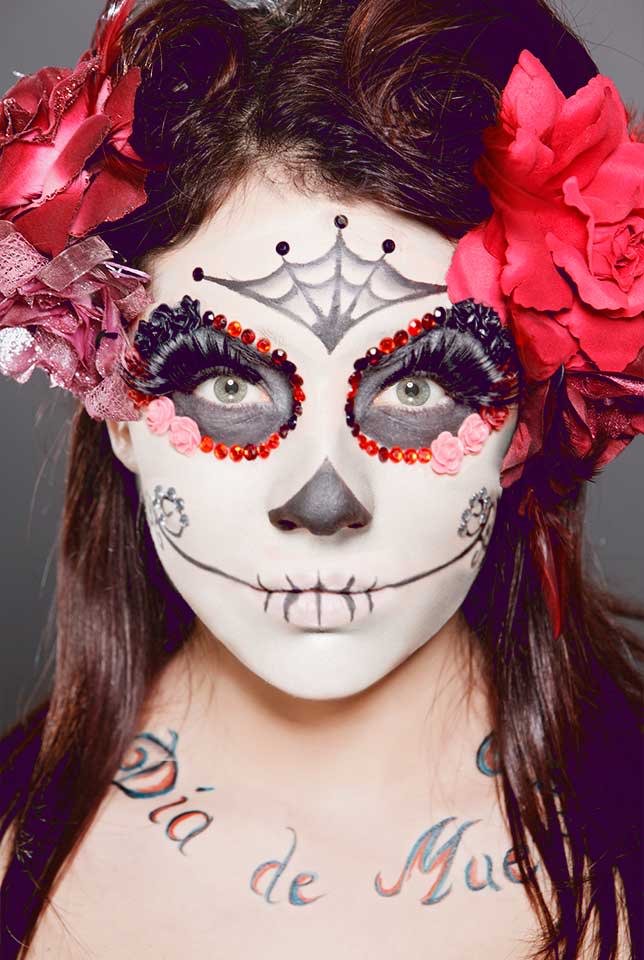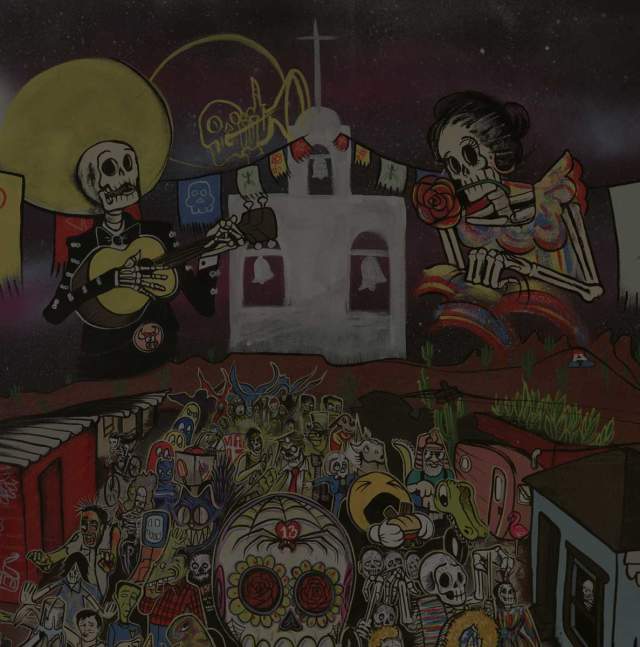A Celebration of Life
A Tucson tradition with roots south of the border brings a range of revelers to the Old Pueblo
by Tim Vanderpool
Dusk settles on the murmuring throng hundreds deep gathered along a stretch of Fourth Avenue. Scattered among this vast, annual assemblage of people known as the All Souls Procession are robed monks and masked dancers, seven-foot-tall calaveras, and solemn “Norsemen” toting a full-size boat, far removed from its watery grave. Someone coaxes melancholy chords from a rolling baby grand piano while another taps out dirges on his bicycle-mounted marimba.
We are honoring our dearly departed. And what an astonishing and creative display it is; twirlers and stilt-walkers flush in quixotic flames take to the streets under the ethereal white glow of LED lights.
A puppet of a winged crane is so large it takes a quorum to carry it. The towering papier mâché bird is trailed by a drum corps and a samba school and thirty musicians blowing their sorrowful souls into thirty bagpipes.
But the most riveting spectacle bears neither feet nor wheels. Rather, it’s the simple beauty of shared humanity that makes Tucson’s All Souls Procession so special. That same spirit infuses all of the Día de los Muertos or Day of the Dead traditions on display throughout Tucson in October and November. The revelry ranges from the heavenly aroma of bustling Mexican panadería to massive, vibrant gatherings such as the All Souls Procession.
...in Mexico, the Spanish conquistadors encountered and attempted to eradicate such celebrations for the dead.
Tradition in the New Old Pueblo

Today, that faith endures in colorful cemeteries, where families gather to drape the graves of loved ones in marigolds. It’s also found at the Tucson Museum of Art’s Picture This! Día de los Muertos, a family event highlighted by piñatas, face painting and art making—against a backdrop of lovely altars created by schoolchildren.
It’s glimpsed in the Procession of Little Angels, a children’s event that buzzes with wing-making workshops and a twilight parade. And it’s highlighted on the Dia de los Muertos Tour of Barrio Viejo, which explores one of Tucson’s oldest downtown neighborhoods; don’t miss the legendary El Tiradito shrine, or the charming La Pilita Museum Gallery, which hosts a special exhibit of muertos folk art created by students from nearby Carillo Magnet School.
Of course, such special days also demand a visit to one of Tucson’s many south-side bakeries specializing in pan de muertos or “sweet bread of the dead.” While they might sound macabre, these luscious skull and skeleton-shaped cakes are delightfully clever and ultimately delicious.
All Souls Procession
But the All Souls Procession is the grandest spectacle of all. Part theater, part thoughtful remembrance, it now ranks among the largest of such celebrations in America. Pulling from a wide range of traditions for honoring the dead—from ancient European to Japanese to Aztec to Mexican—this is remarkable for a gathering that began on a very personal note in 1990, when Tucson artist Susan Kay Johnson was searching for a way to reflect upon her father’s recent passing. The resulting work included sculpture, a community altar, and small performance pieces scattered through downtown.
With each installment, more people appeared. Johnson had struck a nerve. She was not alone in yearning for some sort of collective contemplation. Soon, her concept had evolved into workshops, where participants created their own costumes before the long walk. During the grand procession, enormous photographs of loved ones were now projected on building walls as part of the Ancestors Project, while other events commemorated those who had passed with personal altars in a grassy, downtown park.
A few years after Johnson’s inaugural event, participants Nadia Hagen and Paul Weir of the fire performance group Flam Chen took over the workshops for a time. Their role added a fiery countenance to this annual event that would climax with the burning of a huge golden urn, filled with affectionate mementos of lost loved ones.

Now, as night takes hold and the crowd falls into step, it becomes clear that All Souls and Día de Los Muertos are both about remembrance and a celebration of life.
Today, the All Souls Procession is coordinated by the nonprofit group Many Mouths One Stomach (MMOS), and has stretched into a weekend-long affair featuring black and white photo contests, and an elaborate continuation of Susan Johnson’s community altar.
But it actually begins with a flurry of activity weeks in advance. There are the two-month puppet and mask-making classes run by MMOS. And there are sessions, focusing on dance theatre, stilt-walking and aerial artistry, which culminate in a sweeping finale featuring 125 performers.
On Saturday, the Procession of Little Angels, a children’s gathering, unfolds on the plaza of downtown’s Armory Park, and the following day the Grand Procession fills entire streets for block after block. Some people join the parade; others are content to simply watch as the enormous outpouring passes by.
Now, as night takes hold and the crowd falls into step, it becomes clear that All Souls and Día de los Muertos are both about remembrance and a celebration of life.







